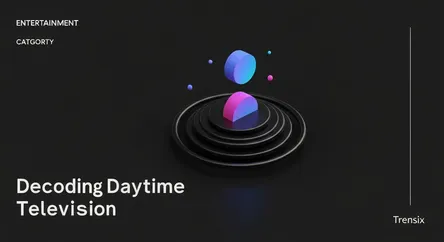Entertainment
Decoding Daytime Television

Explore the world of daytime TV, from its iconic talk shows and soap operas to its lasting impact on culture and daily routines. Why does it endure?
What is it?
Daytime television refers to television programming broadcast during the morning and afternoon hours, typically between 9 a.m. and 5 p.m. It is traditionally targeted at audiences who are home during the day, such as stay-at-home parents, retirees, and remote workers. The landscape is dominated by specific genres, including long-running soap operas, host-driven talk shows (like 'The View' and 'Dr. Phil'), popular game shows ('The Price Is Right'), and court shows. Unlike primetime, daytime content often features lower production budgets and focuses on serialized stories, celebrity interviews, and audience interaction.
Why is it trending?
Despite the rise of on-demand streaming, daytime television maintains its relevance by creating viral, shareable moments. Clips from talk shows frequently trend on social media platforms like X and TikTok, introducing the format to new, younger audiences. The established routines and comforting predictability of legacy shows provide a sense of stability for loyal viewers. Furthermore, the increase in remote work has expanded its potential audience, as more people are home to tune in. These shows continue to be a major platform for news-making interviews and cultural conversations.
How does it affect people?
Daytime television often acts as a form of companionship and a staple in daily routines for millions. It can significantly shape public opinion on social issues, politics, and pop culture through the discussions held on talk shows. The serialized nature of soap operas creates deep emotional investment and community among fans. It also influences consumer habits through direct advertising and product placements. For many, it's a primary source of entertainment, news, and a perceived personal connection to celebrities, fostering a shared cultural experience.